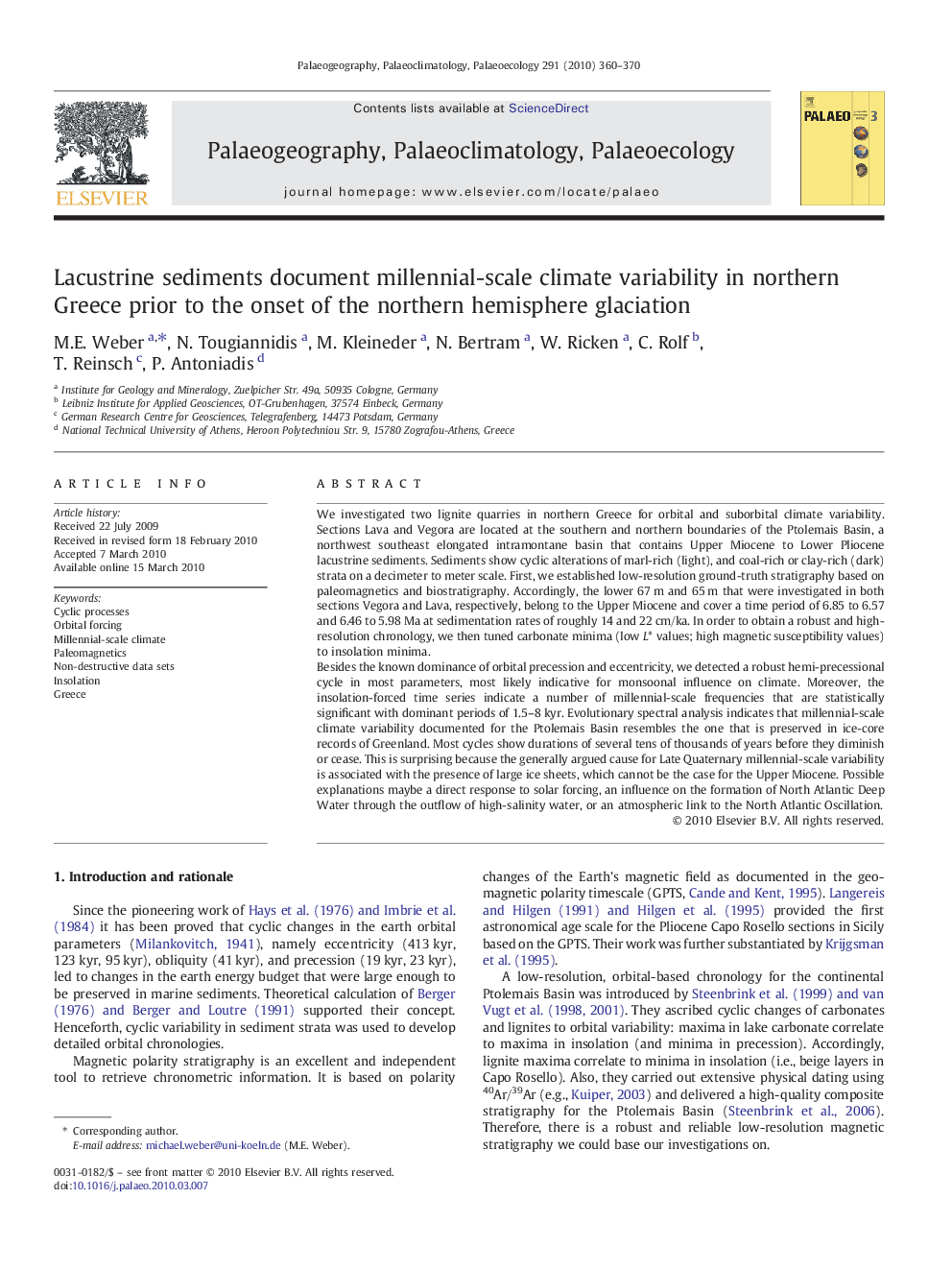| کد مقاله | کد نشریه | سال انتشار | مقاله انگلیسی | نسخه تمام متن |
|---|---|---|---|---|
| 4467755 | 1622279 | 2010 | 11 صفحه PDF | دانلود رایگان |

We investigated two lignite quarries in northern Greece for orbital and suborbital climate variability. Sections Lava and Vegora are located at the southern and northern boundaries of the Ptolemais Basin, a northwest southeast elongated intramontane basin that contains Upper Miocene to Lower Pliocene lacustrine sediments. Sediments show cyclic alterations of marl-rich (light), and coal-rich or clay-rich (dark) strata on a decimeter to meter scale. First, we established low-resolution ground-truth stratigraphy based on paleomagnetics and biostratigraphy. Accordingly, the lower 67 m and 65 m that were investigated in both sections Vegora and Lava, respectively, belong to the Upper Miocene and cover a time period of 6.85 to 6.57 and 6.46 to 5.98 Ma at sedimentation rates of roughly 14 and 22 cm/ka. In order to obtain a robust and high-resolution chronology, we then tuned carbonate minima (low L* values; high magnetic susceptibility values) to insolation minima.Besides the known dominance of orbital precession and eccentricity, we detected a robust hemi-precessional cycle in most parameters, most likely indicative for monsoonal influence on climate. Moreover, the insolation-forced time series indicate a number of millennial-scale frequencies that are statistically significant with dominant periods of 1.5–8 kyr. Evolutionary spectral analysis indicates that millennial-scale climate variability documented for the Ptolemais Basin resembles the one that is preserved in ice-core records of Greenland. Most cycles show durations of several tens of thousands of years before they diminish or cease. This is surprising because the generally argued cause for Late Quaternary millennial-scale variability is associated with the presence of large ice sheets, which cannot be the case for the Upper Miocene. Possible explanations maybe a direct response to solar forcing, an influence on the formation of North Atlantic Deep Water through the outflow of high-salinity water, or an atmospheric link to the North Atlantic Oscillation.
Journal: Palaeogeography, Palaeoclimatology, Palaeoecology - Volume 291, Issues 3–4, 15 May 2010, Pages 360–370